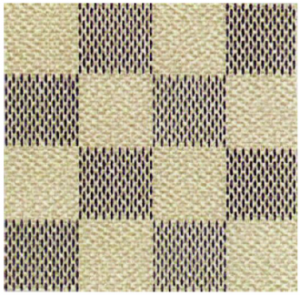Background of the case
The applicant Louis Vuitton, filed in 2008 an IR designating the EU in Class 18. The mark sought for registration, was a pattern of colors, as the below one:

On June 2015, a third party filed an application with EUIPO for a declaration of invalidity based on absolute grounds. The Cancellation Division, upheld the claim based on grounds of Article 7.1, b) of the Regulation (lack of distinctiveness). Subsequently, an Appeal was filed by Louis Vuitton, which was entirely dismissed.
The applicant therefore brought an action before the General Court alleging an incorrect assessment by the Board of Appeal of the inherent distinctive character of the mark at issue and an error in the assessment of the distinctive character acquired through use of the mark at issue.
Decision of the Court.
Firstly, the Court argues that Contrary to the applicant’s claims, the Board of Appeal did not carry out a fresh assessment of its own motion; rather it merely examined the arguments and evidence invoked by the applicant for a declaration of invalidity and found these to be substantiated by well-known facts. Also, it is noted the fact that the mark at issue was a basic and commonplace pattern that did not depart significantly from the norm or customs of the sector concerned was a well-known fact.
As a second plea, Louis Vuitton, alleged that the Board of Appeal erred in its assessment of the distinctive character acquired through use of the mark at issue. The Court, after an exhaustive assessment of the body of evidence and the relevant case law has ruled that “the fact remains that the Board of Appeal did not at any time assess the entirety of the evidence specifically relating to Estonia, together with the evidence relating to the European Union as a whole or to a region of the European Union (for example eastern Europe) which may also be relevant to Estonia. It follows from all the foregoing that, by failing to carry out an overall assessment of the relevant evidence submitted by the applicant, the Board of Appeal failed to comply with Article 59(2) of Regulation 2017/1001 and the case-law referred to in paragraphs 59 to 72 above.”
Therefore, the General Court annuls the decision of the Second Board of Appeal of 22 November 2018 (Case R 274/2017-2).
Judgement of the General Court (Tenth Chamber) of 10 June 2020, Case T-105/19


 Español
Español Deutsch
Deutsch